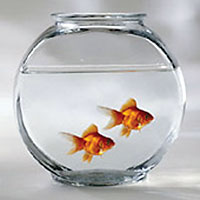 Is a flawed understanding of how Nepal has changed in the last 15 years driving the actions of those in power today?
Is a flawed understanding of how Nepal has changed in the last 15 years driving the actions of those in power today? Fifty years ago, for most Nepalis the very name of their country was that of a foreign land. At the time, 'Nepal' was used to refer to a few bajaars in the heart of present-day Kathmandu. Forty years ago, college graduates were so scarce that some found it a matter of public pride to write 'BA' or 'MA' after their surnames. Thirty years ago, unless you knew a senior government officer well, getting a passport to go abroad took years. And 20 years ago, if you were a resident of Dharan, Dang or Darchula, all you received clearly on your transistor radio was state-sanctioned Kathmandu-centric news and music from the towers of Radio Nepal in Singha Darbar.
Indeed for much of the past 50 years, Nepal existed like a brass cauldron: no matter what was going on inside, few on the outside saw what was brewing. This opacity allowed the then rulers to maintain a pleasant fiction of 'poor but happy and hardworking' subjects and to continue to stoke the embers of narrow patriotism through various 'soil-appropriate' remedies, which benefited only the thin slice of the country's 'elite' population.
The overheated stew finally bubbled over in 1990. Soon, with a new liberal constitution and the selection of people's representatives via competitive politics, the days of Nepal as a mysterious Himalayan cauldron had ended. Since then, three factors have coalesced to transform Nepal into something more like an aquarium, making what goes on inside today plainly visible to all on the outside.
First, multiparty democracy made ordinary Nepalis see that they could potentially trust people like themselves to represent them accountably in a national arena. Sure, there were problems. But those problems arose not from the faults of multiparty democracy per se but from the way wrong incentives got institutionally entrenched in the functioning of that representative system.
Second, technological progress that led to falling communication expenses worldwide made it easy for Nepalis to receive news and views from various sources, only one of which was the state. Once you have people accustomed to discussing and comparing news, it's difficult to force them to accept only one view. And finally, with hundreds of thousands of Nepalis going abroad to study, work, travel, trade and live, globalisation asserted its influence-connecting them to the rest of the world for contacts, ideas and support for success on their own terms.
This changed Nepal-from an opaque cauldron to a transparent aquarium-is what those in power fail to grasp. They send human rights activist Krishna Pahadi to jail for five months, only to see him emerge as a hero to everyone inside and outside of Nepal. They confiscate equipment from Kantipur FM at midnight, only to see the rest of the world get an inflamed version of their actions against the press. They drape the walls of the aquarium with self-serving Hindu orthodoxy, Panchayat-style patriotism and don't-listen-to-foreigners injunctions, only to find their stature diminished on the global stage. Such tactics would probably have worked 20 or 30 years ago, at a time when teaching typewriting skills to aspiring secretaries was also a viable business.
But the world has changed since. And along with it, Nepal has changed too, irrevocably. That is why the past is best relived through memories and not by forcefully transforming the present into the past. After all, 80 percent of Nepalis (ie, those 40 years or younger and still without power) have grown up relating to Nepal as an aquarium and not a cauldron.



